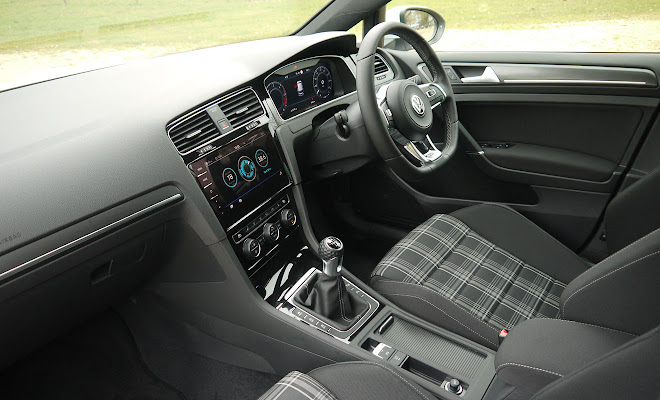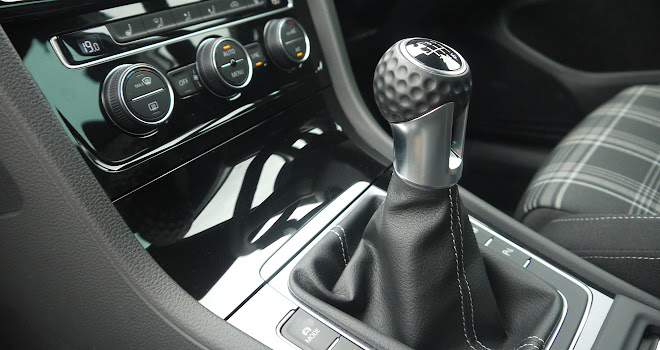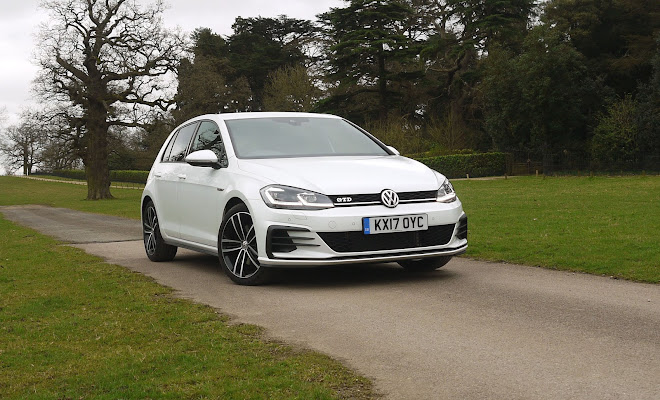Volkswagen has updated the Golf for 2017, bringing some quite subtle changes to the exterior of the car – new bumpers and lights, for example – as well as upgrades in the cabin.
The changes are especially welcome towards the top of the Golf range, helping to make the more expensive editions seem a bit more advanced. The strong selling GTD, the most powerful diesel variant that accounts for about 1 in 14 sales of the Golf hatchback, now comes with a digital instrument panel as standard, for example. It’s a relatively small change but one that dramatically lifts perceptions from behind the wheel.

When combined with the new optional 9.2-inch, high-resolution central screen (a £1,325 upgrade from the GTD’s standard 8-inch touchscreen), the revised car appears to have jumped forward into a much more digital age. The bigger screen supports gesture control for what would otherwise be sideways swipes or on-screen prods. You simply wave you hand in the desired direction and the screen reacts. It’s a little bit gimmicky but the feature can be helpful when switching between favourite radio stations, for example.
The digital instruments are more practical, allowing you to select what information you’d like to see at a glance. The two big dials can also shrink down to devote a larger chunk of the 12.3-inch instrument screen to the satnav map, for example.

The versatility of digital presentation is also used to communicate more complex features. When you set the adaptive cruise control, for example, a green section appears on the speedometer showing your chosen cruising speed and how far below it you’re currently running because of that dawdling slowcoach in front.
Of course nobody chooses a hot hatch like the GTD for its instruments. VW has fiddled relatively little with the car’s mechanical components for the refresh, but that’s OK because they were already pretty impressive – see my review of the 2013 GTD for details.
The car weighs the same as before, and VW says its four-cylinder 2.0-litre diesel engine has undergone only “small improvements”. There’s still 184 horsepower and 380Nm of torque to call upon, and the GTD will still sprint to 62mph in 7.5 seconds, just like last year’s car. From behind the wheel, the car remains as quick and entertaining to drive as ever. Prices start from £27,065.

Pay an extra £1,415 to swap from the six-speed manual gearbox to VW’s dual-clutch DSG automatic and you will get something new, however. The 2016 version of the GTD had only a six-speed auto box, but now there’s a new seven-speed unit to play with.
As before, the DSG edition of the GTD comes with paddles behind the wheel, a manual slot for the gearstick and the choice of eco, normal or sport driving modes, so you are not short of ways to tweak the gearbox’s shift decisions to your liking. It’s particularly handy that you can set the car to eco mode for general trundling about, preserving fuel and cash as you go, but switch into sport mode by simply tugging the gearstick for an instant transformation in eagerness.
VW says the extra cog in the new DSG box helps to improve economy: “Fuel consumption is reduced thanks to the larger spread of individual gears,” it points out.
It doesn’t say by how much things have improved, so I looked it up. And the odd thing is, if you line up the stats from last year’s DSG-equipped GTD with the 2017 equivalent, what you see is 2.4mpg worse fuel consumption – according to VW’s official figures at least. The GTD’s CO2 rating has also taken a backward stride. Last year’s five-door automatic GTD was rated at 127g/km while this year’s five-door automatic GTD achieves 129g/km.

These are relatively small changes, but they sent me off down the list of stats to see if the manual GTD has been similarly “improved” over the old model. And it has. In 2016 a GTD on 18-inch wheels was rated at 114g/km, whereas the facelifted version on equivalent alloys has crept up to 122g/km. That’s 8g/km worse than last year – a backwards stride that will cost company car drivers an extra 2% in their benefit-in-kind calculations (roughly £250 a year for 40% taxpayers).
Worsened CO2 results are underscored by the appearance of a new GTD BlueLine trim level, which costs exactly the same as the standard GTD and seems to differ only in its wheels.
The BlueLine’s alloys are 17 inches rather than 18 inches in diameter, fitted with 225/45 rather than 225/40 tyres. Power and performance figures remain the same, but CO2 and economy figures are improved. And this time when I say improved I mean it, but only compared to this year’s standard GTD. The GTD BlueLine’s results are generally slightly worse than last year’s car on its more stylish 18-inch wheels. Only the new DSG version of the GTD BlueLine, with both smaller wheels and an extra gear to call upon, manages to record figures that are better than the standard GTD equivalent a year ago – and then by only 5g/km.
Anyone disappointed by the need to trade down to smaller wheels to approach last year’s CO2 rating might be doubly surprised to learn that buyers of a GTD last year could opt for 19-inch alloys without a CO2 penalty.
What does all of the above tell us? Has VW’s 2017 facelift actually made the GTD worse? In short, no. What we are seeing is VW trying to be a model corporate citizen after the Dieselgate scandal.
The company says it has “changed the parameters and restrictions of our measurements on fuel consumption” to make the results “closer to the real world”. For years, manufacturers have taken advantage of loopholes and tolerances in the testing rules to get better results, but it’s up to the maker to decide how much it respects the spirit rather than the letter of the law (when not simply flouting the rules, as was the case with Dieselgate).
As a result, the real-world fuel consumption you might achieve in the new GTD will probably not have altered. The only thing missing from the new GTD, compared to the old one, is VW’s corporate brass neck.





